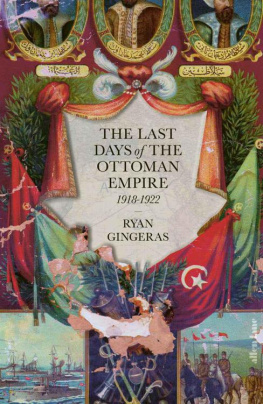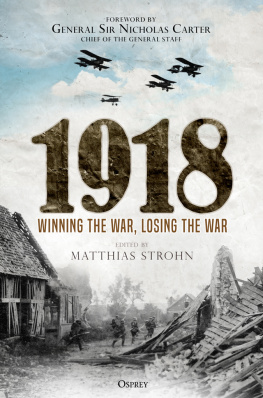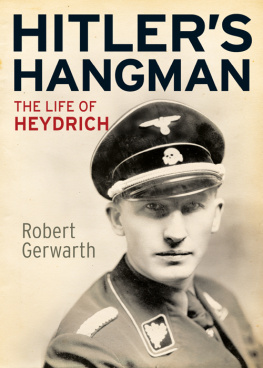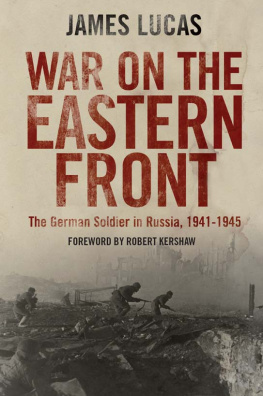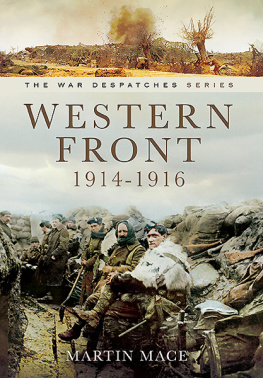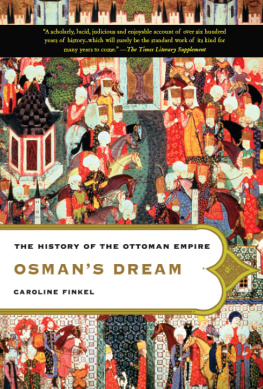Robert Gerwarth
THE VANQUISHED
Why the First World War Failed to End, 19171923
Contents
For Oscar and Lucian
List of Maps
. Europe in March 1918
. New borders in central and eastern Europe, 191823
. Allied plans for the Dismemberment of the Ottoman Empire, 1919
. Actual dismemberment of Hungary, 191819
List of Illustrations
Every effort has been made to contact all copyright holders. The publisher will be happy to make good in future editions any errors or omissions brought to their attention.
. Lenins forged passport. (Photograph: PA Photos)
. German and Russian soldiers celebrate the armistice. (Photograph: Scherl/Sddeutsche Zeitung Photo)
. German troops advance during their 1918 spring offensive. (Photograph: Imperial War Museum, London (Q 47997))
. German prisoners of war on the Western Front, 1918. (Photograph: DPA/PA Photos)
. Italian troops on a mountain road near Portule during the battle of Vittorio Veneto, October-November 1918. (Photograph: Imperial War Museum, London (Q 25946))
. Austrian prisoners of war, Trento, November 1918. (Photograph: Mondadori/Getty Images)
. German Freikorps troops in the Baltic region, November 1919. (Photograph: Herder Institut, Marburg (DSHI))
. Victorious White Guards after the Battle of Tampere, Finland, 1918. (Photograph: Tampere Museums, Vapriikki Photo Archives, Finland)
. Villagers hanging Bolshevik emissaries during the Russian Civil War. (Photograph: Stapleton Collection/Heritage Images/TopFoto)
. Russian orphans. (Photograph: Scherl/Sddeutsche Zeitung Photo)
. Philipp Scheidemann, proclaims the German Republic from the Reichstag building, Berlin, 9 November 1918. (Photograph: ullstein bild/Getty Images)
. The Aster Revolution in Budapest, 31 October 1918. (Source unknown)
. Police clash with demonstrators during the Communist putsch in Vienna, Austria, June 1919. (Photograph: Sddeutsche Zeitung Photo)
. Gunmen fire on government troops during the Spartacist Rising, Berlin, January 1919. (Photograph: Scherl/Sddeutsche Zeitung Photo)
. Government troops near Berlin Cathedral during the Spartacist Rising. (Photograph: Bundesarchiv, Koblenz (Bild 102-01454A))
. Bela Kun addresses a gathering of students and workers in 1919. (Photograph: De Agostini/Getty Images)
. Red Army soldiers with the corpse of a suspected counter-revolutionary, Hungary, May 1919. (Photograph: ullstein bild/akg-images)
)
. Freikorps soldiers and government troops march prisoners through the streets of Munich after the fall the Soviet Republic, May 1919. (Photograph: Scherl/Sddeutsche Zeitung Photo)
. The signing of the Neuilly treaty, 27 June 1919. (Photograph: National Library Cyril and Methodius, Sofia (C II 1292))
. Arrest of Stambolijskis man-servant during the anti-BANU putsch, June 1923. (Photograph: Sddeutsche Zeitung Photo)
. Mussolini and fellow Italian Blackshirts during the March on Rome, 1922. (Photograph: BIPs/Getty Images)
. Romanian military parade in central Budapest, 1919. (Photograph: De Agostini/Getty Images)
. Anti-Czech demonstration, Vienna, March 1919. (Photograph: Scherl/Sddeutsche Zeitung Photo)
. Ethnic German refugees from West Prussia, 1920. (Photograph: Scherl/Sddeutsche Zeitung Photo)
. Greek infantry advances through the Anatolian plateau during the Greco-Turkish War. (Photograph: TopFoto)
. Mustafa Kemal and his general staff, 1919. (Photograph: Scherl/Sddeutsche Zeitung Photo)
. Smyrna in flames, September 1922. (Photograph: Alamy)
. Greek refugees flee Smyrna by sea, September 1922. (Photograph: Getty Images)
. Demonstration against the Trianon Treaty, Budapest, 1931. (Photograph: Scherl/Sddeutsche Zeitung Photo)
. The train carriage in which the Germans signed the armistice is removed from a French museum, June 1940. (Photograph: Bundesarchiv, Koblenz (Bild 146-2004-0147))
Introduction
Both sides, victors and vanquished, were ruined. All the Emperors or their successors were slain or deposed All were defeated; all were stricken; everything they had given was in vain. Nothing was gained by any Those that survived, the veterans of countless battle-days, returned, whether with the laurels of victory or tidings of disaster, to homes engulfed already in catastrophe.
Winston Churchill, The Unknown War (1931)
This war is not the end but the beginning of violence. It is the forge in which the world will be hammered into new borders and new communities. New molds want to be filled with blood, and power will be wielded with a hard fist.
Ernst Jnger, Der Kampf als Inneres Erlebnis (1928)
It was on 9 September 1922 that the passions aroused by a decade of war descended on the city of Smyrna. As Turkish cavalry entered what was once the most prosperous and cosmopolitan city of the Ottoman Empire, the Christian majority among its population looked on in nervous anticipation. Smyrna was a city in which Muslims, Jews, Armenians and Greek Orthodox Christians had lived together more or less peacefully for centuries. But nearly ten years of war had changed the citys inter-ethnic relations. After losing nearly all of its vast European territories in the Balkan Wars of 191213, the Ottoman Empire had joined the Great War as Germanys ally in August 1914 and found itself on the losing side yet again. Stripped of its Arab domains in what subsequently became known as the Middle
After a brutal three-year conflict that saw extraordinary levels of atrocities against both Muslim and Christian civilians, the fortunes of war had now turned decisively against the Greeks. Lured into the interior of central Anatolia by the capable leader of the Turkish nationalists, Mustafa Kemal, the hopelessly overstretched and incompetently led Greek troops collapsed when Kemal better known under his future honorific name Atatrk (Father of the Turks) launched a major counter-offensive in the summer of 1922. The hasty withdrawal of the ruined Greek army, accompanied by looting, murder and arson against the Muslim population of western Anatolia, led to well-founded fears of reprisals among the Christian population of Smyrna. But deceptive assurances from the citys Greek occupation authorities and the presence of no fewer than twenty-one Allied warships anchored in the harbour of Smyrna lured the Greeks and Armenians into a false sense of security. Given that the Western Allies most notably Britain had encouraged Athens conquest of Smyrna, surely they would intervene to protect the Christian population from Muslim reprisals?
Such hopes soon proved to be misplaced as the great tragedy of the city unfolded. Shortly after the victorious Turkish army had conquered Smyrna, soldiers arrested the Orthodox Archbishop, Chrysostomos, an outspoken supporter of the Greek invasion, and delivered him to their commanding officer, Major General Sakall Nureddin Pasha. The general released Chrysostomos to a Turkish mob that had gathered outside his quarters, demanding the Metropolitans head. As one observer, a French sailor, recalled, the crowd fell upon Chrysostomos with guttural shrieks and dragged him down the street until they reached a barbers shop where Ismael, the Jewish proprietor, was peering nervously from his doorway. Someone pushed the barber aside, grabbed a white sheet, and tied it around Chrysostomoss neck, shouting, Give him a shave! They tore out the Prelates beard, gouged out his eyes with knives, cut off his ears, his nose, and his


